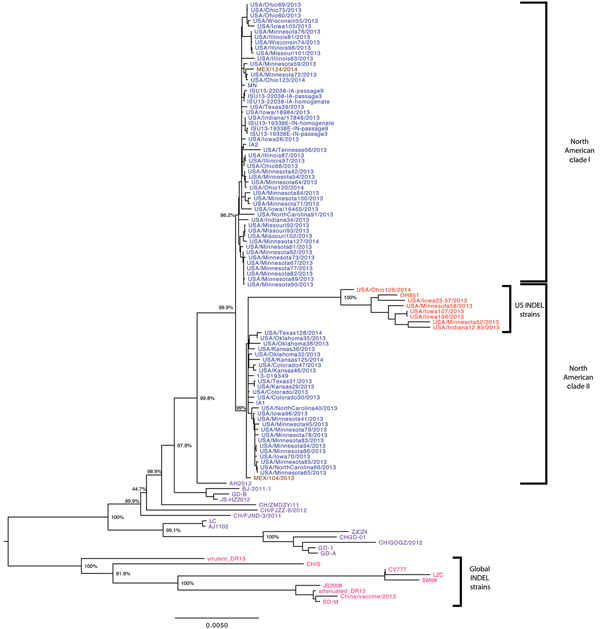Volume 20, Number 10—October 2014
Research
Distinct Characteristics and Complex Evolution of PEDV Strains, North America, May 2013–February 2014
Figure 1

Figure 1. Phylogenetic tree based on complete genome sequences of 112 North American porcine epidemic diarrhea virus strains. Blue represents US non–S INDEL strains; red represents US S INDEL strains; brown represents Mexican strains; purple represents worldwide non–S INDEL strains; and pink represents global S INDEL strains. Bootstrap values are represented at key nodes. Scale bar indicates nucleotide substitutions per site. CH, China; IA, Iowa; S INDEL, insertions and deletions in the spike gene; IN, Indiana; ISU, Iowa State University; MEX, Mexico; MN, Minnesota; USA, United States of America.
1These first authors contributed equally to this article.
Page created: September 12, 2014
Page updated: September 12, 2014
Page reviewed: September 12, 2014
The conclusions, findings, and opinions expressed by authors contributing to this journal do not necessarily reflect the official position of the U.S. Department of Health and Human Services, the Public Health Service, the Centers for Disease Control and Prevention, or the authors' affiliated institutions. Use of trade names is for identification only and does not imply endorsement by any of the groups named above.